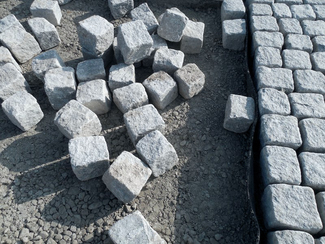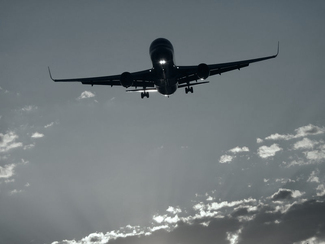Radionuclides are found everywhere in the environment. In principle, every individual on earth is naturally exposed to ionising radiation. Nobody can avoid it. It arises from naturally occurring sources present in nature, independent of human activity.

With the essential elements for food taken up from the soil, also radioactive substances get into the plants and thus into the food chain. Knowledge of the content of natural radioactive substances in food is necessary to estimate the radiation exposure to man resulting from the ingestion of food. The results show that with regard to the mixed diet, there is no significant difference between the individual German regions.

Radionuclides in building materials cause radiation exposure through the emission of gamma radiation and the inhalation of radon released in rooms. The mean value of the gamma local dose rate (ODL) in buildings caused by the natural radionuclides in building materials is about 80 nanosievert per hour. ODL values above 200 nanosievert per hour are rare. The building materials traditionally used in great quantities in Germany, are generally not the cause for enhanced radiation exposures due to radon in buildings.
Residues with enhanced natural radioactivity have arisen from mining or industrial activities over centuries and most of them were deposited on waste rock piles or in tailings ponds. Radiation protection aspects were not taken into account. Depending on the site and usage conditions, enhanced internal and/or external radiation exposures may require subsequent radiation protection measures for members of the public. At present, Germany does not possess a legal norm on the basis of which the owners of radiological relics can be committed to perform remediation or other measures which would reduce the radiation exposure. The following articles will give an overview of the dimension of these relics in Germany.
The total natural radiation exposure in Germany, respectively the annual effective dose for members of the public is on average 2.1 millisieverts. Depending on the place of residence, dietary and life habits, it sometimes adds up from 1 millisievert to 10 millisieverts.

Many people travel for business or pleasure reasons to their distant destinations by plane. These aircraft often fly at altitudes and latitudes, where substantially more radiation affects men than on the Earth’s surface. The energies of this high altitude radiation are so high that they can not be shielded.
The Federal Office for Radiation Protection operates highly specialised laboratories for the detection of radioactive substances in various media. Activities in the laboratories focus on the analysis of radioactive substances for supervision, control, emergency preparedness and research purposes. Duties range from analyses of industrial residues and waste materials, the monitoring of environmental radioactivity to trace analysis of radioactive substances in the atmosphere.





